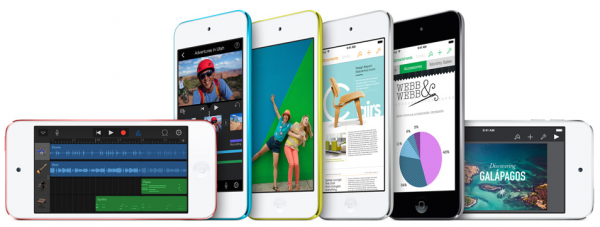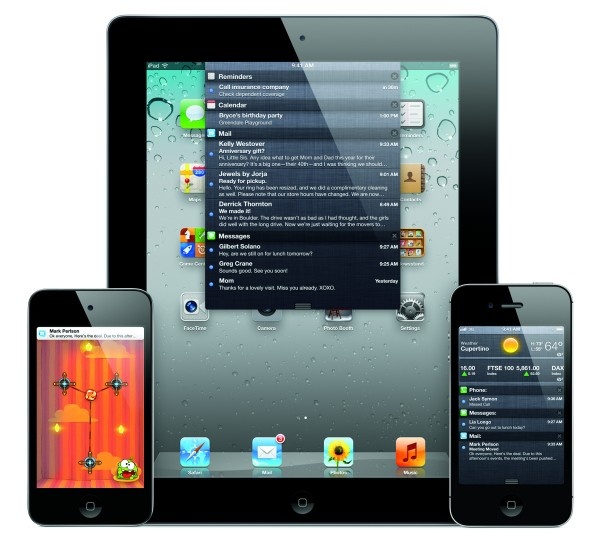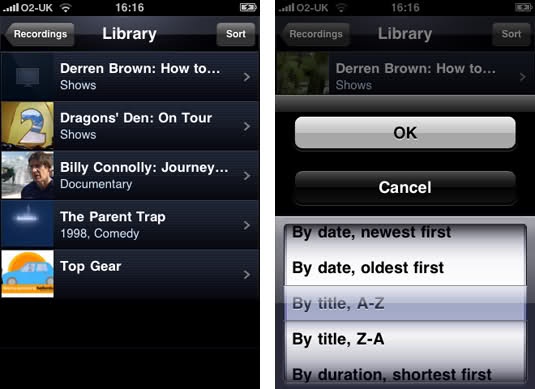283 Games match your search

Fist Out: CCG Duel
iOS + Android

Back 2 Back
iOS + Android

Zynga Poker
iOS + Android

The Abandoned Planet
iOS + Android

My Little Pony: Magic Princess
iOS + Android

Hitman: Blood Money - Reprisal
iOS + Android + Nintendo Switch ...

Kingdom Eighties
iOS + Android + Steam ...

Return to Monkey Island
iOS + Android + Steam ...

Six Ages 2: Lights Going Out
iOS + Steam

Monopoly Go
iOS + Android

Boxville
iOS + Android

Vampire Survivors
iOS + Android + Steam ...

N-GON
iOS

Tallowmere 2
iOS + Android + Steam ...

Dice Versa
iOS + Android

Uncharted Waters Origin
iOS + Android + Steam ...

Journey of Greed
iOS + Android + Steam ...

Everdell
iOS + Android + Steam ...

Hero Emblems II
iOS

Iron Marines: Invasion
iOS + Android

Marvel Snap
iOS + Android + Steam ...

Kingdom Catastrophes
iOS + Android

Sago Mini World
iOS + Android

Unreal Life
iOS + Android + Steam ...

Evan's Remains
iOS + Steam

Finding Paradise
iOS + Android

Devolver Tumble Time
iOS + Android

Two Dots
iOS + Android

Labyrinth City: Pierre the Maze Detective
iOS + Android + Steam ...

Knights of San Francisco
iOS + Android

Farkle Safari
iOS + Android + iPod ...

Mobile Legends: Bang Bang
iOS + Android

Sine
iOS + Android

AdVenture Communist
iOS + Android

Modern Combat 5: Blackout
iOS + Android

Math Bingo
iOS

Egg, Inc.
iOS + Android

Zen Koi
iOS + Android

Super Scrapped Robot
iOS

There Is No Game: Wrong Dimension
iOS + Android

Shadow of Naught
iOS + Android

One Finger Death Punch 2
iOS

100% Golf
iOS

FarmVille 2: Tropic Escape
iOS + Android

Kartrider Rush+
iOS + Android

NBA Live Mobile Basketball
iOS + Android

Slay the Spire
iOS + Android + Steam ...

Card of Darkness
iOS + Mobile + Apple Arcade ...

League of Legends: Wild Rift
iOS + Android

Star Traders: Frontiers
iOS

Apex Legends Mobile
iOS + Android

Teppen
Android + iPhone

Flappy Fighter
iOS

Jumpgrid
iOS + Android

Grand Mountain Adventure
iOS + Android

Monsters With Attitude
iOS + Android

Brave Nine
iOS + Android

Card Crusade
iOS + Android

Rogue Universe
iOS + Android

E.V.A.L
iOS + iPod

Spitkiss
iOS + Android

Into the Dark: Narakan
iOS

MazEpic
iOS + Android

Final Destiny:Heroes' Fantasy
iOS + Android

Shadowgun War Games
iOS + Android

The Gardens Between
iOS + Nintendo Switch

Stickman Soccer 2018
iOS + Android

Dicey Dungeons
iOS + Android + Steam ...

World of Gunships
iOS + Android

PUBG MOBILE
iOS + Android

Rogue Hearts
iOS + Android

Grand Battle Royale
iOS + Android

Demise Of Nations
Android + iPhone

Golf Clash
iOS + Android

Amazing Katamari Damacy
iOS + Android

warbot.io
iOS + Android

Subsurface Circular
iPad

Merge Town!
iOS

Tower Defense Generals TD
iOS + Android

Ruya
iOS + Android

Bottom of the 9th
iOS + Android + Steam ...

Mordheim: Warband Skirmish
iOS + Android + Nintendo Switch ...

BAZOO - Mobile eSport
iOS + Android

INTRUDERS: Robot Defense
iOS + Android

Endless Frontier
iOS + Android

Faeria
iOS + Android

Dan the Man
iOS + Android

Crescent Moon Games Stellar Wanderer
iOS

Tsuro
iOS

MMA Federation
iOS + Android

Devouring Stars
iOS + Steam

Ace of Arenas
iOS + Android

Mavenfall
iOS

Templar Battleforce RPG Full Game HD
iOS + Android

Hotel Transylvania 2
iOS + Android

Horizon Chase - Arcade Racing
iOS + Android

Rock On - A SongPop Adventure
iOS

Ryan North's To Be Or Not To Be
iOS + Android

Titans
iOS

The Princess Bride - The Official Game
iOS

Roblox
iOS + Android

Hatchi 2
iOS

Darkness Reborn
iOS + Android

Spellspire
iOS

Cahoots!
iOS

Monzo
iOS + Android

ODenis Studio Fish & Shark
iOS

The Walking Dead: No Man's Land
iOS + Android

Final Fantasy Record Keeper
iOS + Android

FFFFF2P
iOS + Android

Mucho Party
iOS + Android

Outernauts: Monster Battle
iOS

Ruzzle Adventure
iOS

Fighting Fantasy: Starship Traveller
iOS + Android

Tank Battle: East Front 1943
iOS

Talisman: Digital Edition
iOS + Android + Steam ...

Cabin Escape: Alice's Story
iOS

Caveman Wars
iOS + Android

Bentley's Hackpack
iOS + Android + PlayStation Vita ...

Archangel
iOS + Android

Super Mega Worm vs Santa Saga
iOS + Android

Shape Jam
iOS + Android

Chicken Boy
iOS + Android

Hunger Games: Catching Fire - Panem Run
iOS + Android

Double Dragon Trilogy
iOS + Android

Tiny Games
iOS

Happy Hills 2: Bombs Away!
iOS

Fiete Match
iOS

Dumb Ways to Die
iOS + Android

Ookibloks
iOS

Cool Clash
iOS

Godfire: Rise of Prometheus
iOS + Android

PlayStation All-Stars Island
iOS + Android

Mines of Mars
iOS + Android

Jawfish Words
iOS + Android

TurtleStrike
iOS + Android

Star Wars: Knights of the Old Republic
iOS + Android + Steam ...

Match-Up! by Big Fish
iOS

Ms. Splosion Man
iOS

Castaway Paradise
iOS + Android + Facebook ...

Arlo's Adventure
iOS

Outland Games
iOS

Gemini Rue
iOS + Android + Steam ...

Worm Run
iOS + Android

Talisman Prologue HD
iOS + Android

Zombie Road Trip
iOS + Android

Syder Arcade HD
iOS + Android

Lost Treasures of Infocom
iOS

Space Hulk
iPad + PlayStation Vita

Bubble Galaxy with Buddies
iPhone

Sentinel 4: Dark Star
iOS + Android

Letterpress
iOS

Boomtime Baseball
iOS

Forever Lost
iOS + Android

Best of British: Summer Sports
iOS

Bastion
iOS + Steam

Warhammer Quest
iOS + Android + Steam ...

Real Boxing
iOS + Android + PlayStation Vita ...

My Kingdom for the Princess III
Android + iPad

Alien vs Predator: Evolution
iOS + Android

Traintiles
iPhone + Windows Phone

Little Inferno
iOS + Android

A Clockwork Brain
iOS

Spiral Episode 1
iOS

Little Things Forever
iOS + Android

Cubis Creatures
iOS

AbraWordabra
Android + iPhone + bada ...

Golf Squared
iOS + Android

Mega Run
iOS

Kingdoms of Camelot: Battle for the North
iOS + Android

The Hunger Games: Girl on Fire
iOS

Hyper Snake
iOS

Froad
iOS + Android

Sonic The Hedgehog 4: Episode II
iOS + Android + PlayStation Phone (Xperia Play) ...

Major Mayhem
iOS + Android + Steam ...

Bag It!
iOS + Android

God of Blades
iOS + Android

Blood & Glory
iOS + Android

Wind-up Knight
iOS + Android + PlayStation Phone (Xperia Play) ...

Assassin's Creed Rearmed
iOS

Crow
iOS

Mage Gauntlet
iPhone

Frogger Decades
iPhone

Kids vs Goblins
iOS

Siegecraft
iOS + Android

Epoch
iOS + Android + Steam ...

Puzzle Family
iPhone

Galaga 30th Collection
iPhone

Snooker Club
iOS

Atari's Greatest Hits
iOS + Android

Frisbee Forever
iOS + Android

Chicken Balls HD
iPad

Quiz Climber
iPhone

Zombie Runaway
iOS + Android

Volcano Escape
iPhone

MaXplosion
iPhone

Monkey Island Tales 1 HD
iPad

Avenging Spirit
iPhone

Pogo Games
iPhone

Rock Band Reloaded
iOS + Mobile

Jenga
iOS + Android

Evil Dead
iPhone

Game Dev Story
iOS + Android

Trucks and Skulls
iOS

Hook Worlds
iPhone

Color Cross HD
iPad

Phantasy Star II
iPhone

Hybrid 2: Saga of Nostalgia
iPhone

Highborn HD
iPad

Rhythm Spirit
iPhone

Archetype
iPhone

StarDunk
Android + iPhone

NCAA Football HD
iPhone

Physics Gamebox
iPhone

Fieldrunners for iPad
iPad

Highborn
iOS + Facebook

Pinball HD
Android + iPad

The Witcher: Versus
iOS + Android

Fishing Kings
iPhone

2010 FIFA World Cup South Africa
Mobile + iPhone

A.D.D. - Addictive Dumb Distractions
iPhone

Cool Curlings
iPhone

Majesty: The Fantasy Kingdom Sim
iOS + Android + Mobile ...

Crap of Defense
iPhone

Final Fantasy II (iPhone)
Android + iPhone

Final Fantasy
Android + Mobile + iPhone ...

Ridge Racer Accelerated
iOS

Guerrilla Bob
Android + iPhone

GT Racing: Motor Academy (iPhone)
Android + iPhone

10 Balls, 7 Cups
iPhone

Squeeballs Party (iPhone)
iPhone

Toy Bot Mini Missions
iPhone

Ravensword: The Fallen King
iPhone

Grand Theft Auto: Chinatown Wars (iPhone)
iOS + Android

Cassandra's Journey: The Legacy of Nostradamus
iPhone

The Secret of Monkey Island: Special Edition
iPhone + Steam

Word Tower
iPhone

Bumper Stars
iPhone

Aera
iPhone

Defender Chronicles: Legend of the Desert King
iPhone

TowerMadness
iPhone

Toki Tori
Android + PlayStation Phone (Xperia Play) + iPhone ...

Flick NBA Basketball
iPhone

iZombie Death March
iPhone

NBA Live (iPhone)
iPhone

Cooking Star
iPhone

Dapple
iPhone

Crazy Snowboard
Android + PlayStation Phone (Xperia Play) + iPhone ...

Alpine Racer
iPhone

WordFu
iPhone

Jabeh
iPhone

Let's Golf
Android + Mobile + iPhone ...

Mafia: Respect and Retaliation
iPhone

Peggle (iPhone)
iPhone

Check-4
iPhone

Dropship
iPhone

Astraware Board Games
iPhone

Dizzy Bee 2
iPhone

Smiles (a.k.a. Smiles HD)
iOS + Android

Million Dollar Password 2009
iPhone

Touch 'Em
iPhone

Skizzle
iPhone

Big Bang Board Games
iPhone

Dizzy Bee
iPhone

Mouse About
iPhone

TiLE
iPhone

Star Trigon
iPhone

Rock'n'Roll (iPhone)
Android + iPhone

iSplume
iPhone

Real Football 2009 (iPhone)
iPhone

Diner Dash (iPhone)
Android + iPhone

Activision Anthology
iOS + Mobile

Billy Frontier
iPhone

ACTSudoku
iPhone

Mach Dice
iPhone

Enjoy Sudoku
iPhone

Wurdle
iPhone

Mondo Solitaire
iOS

Bomberman Touch: The Legend of Mystic Bomb
iPhone

Texas Hold'em (iPhone)
iPhone

Final Fantasy Tactics: The War of the Lions
iOS + Android + Sony PSP ...

Company of Heroes
iOS + Android

Carmageddon
iOS + Android + Mobile ...
Show More Games






















